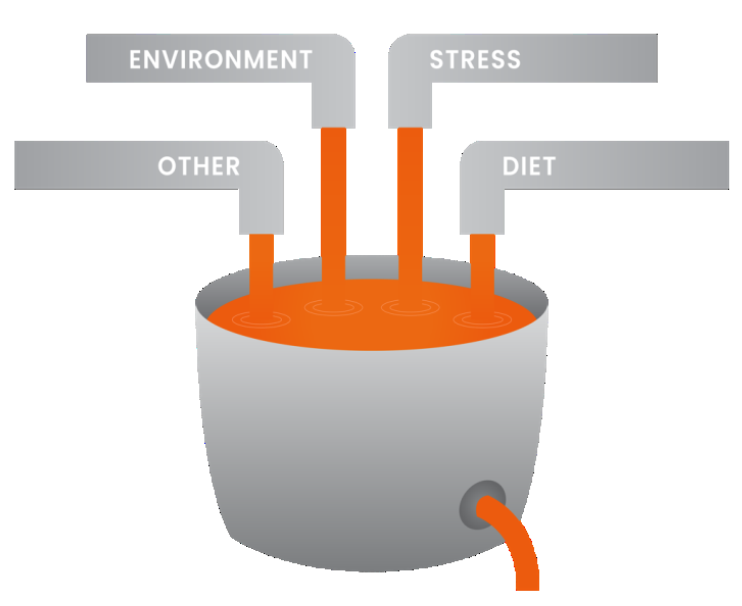The Bucket Analogy is often used to explain allergies and sensitivities. Imagine a bucket that has a small hole at the bottom. Water fills the bucket from a tap. If water comes in at the same rate as water leaves through the hole in the bottom, the bucket will never fill. If the water comes in faster than it can leave, the bucket will eventually overflow, make a mess, and cause problems.
Think of the water representing a substance that your body is sensitive to and has difficulty processing or eliminating. This could be things like oxalates, salicylates, lectins, histamine and nickel. The hole at the bottom of the bucket represents your body’s elimination routes (kidneys, liver, bowels and skin). The size of the bucket represents how much of a particular substance you can tolerate before your personal bucket overflows and symptoms start to appear.

If substances come in at the same rate as they’re being eliminated, your bucket won’t overflow. This is the ultimate goal.
When your personal tolerance level is near the rim of the bucket, it doesn’t take much to throw off the equilibrium of the incoming/outgoing substances.
To add an element of surprise, as the amount of the substances in your blood decrease, your body might start to release accumulated substances from your tissues. If you’ve been exposed to higher than average levels, these might have been building up for many years. If your bucket is nearly full, substances can slosh around when even a little more comes in, and your symptoms can come back without reason or warning (called “dumping” or “healing reactions”).
This bucket analogy applies to anything that causes inflammation. To increase capacity and resilience, it’s important to reduce what’s causing overall inflammation while at the same time working on improving overall health.
Take your first step toward a Personalized Active Care Plan! Book a free consultation with me at susan@susancachay.com.
